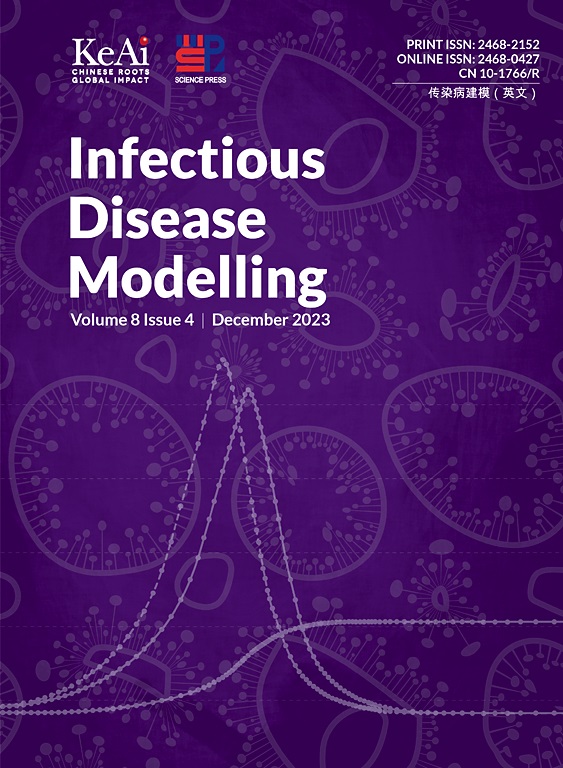从尸体和受感染个体累积释放的埃博拉疫情模型的全球稳定性
IF 2.5
3区 医学
Q1 Medicine
引用次数: 0
摘要
本文提出了一个SVEIRDP流行病模型,以无限积分的形式研究埃博拉病毒从感染者和尸体中累积释放的传播动力学。首先,证明了解的正性和最终有界性。其次,计算基本复制数R0。进一步证明了当R0<;1时,模型具有无病平衡点且全局渐近稳定(GAS);如果R0>;1,唯一的地方性平衡是GAS。为了更清晰地说明理论结果,采用实际数据进行数值模拟。我们发现,利用具有适当概率密度函数(PDF)的无限积分对感染个体和尸体的埃博拉累积释放进行建模,可以更真实、更准确地表示实际的疾病传播。本文章由计算机程序翻译,如有差异,请以英文原文为准。
Global stability for a cumulative release Ebola epidemic model from the corpses and infected individuals
In this paper, a SVEIRDP epidemic model is proposed to investigate the transmission dynamics of Ebola by cumulative release from the infected individuals and corpses in the form of infinite integrals. First, the positivity and ultimate boundedness of solutions are proved. Second, the basic reproduction number is calculated. Furthermore, it is proven that if , the model has the disease-free equilibrium and is globally asymptotically stable (GAS); If , the unique endemic equilibrium is GAS. To clearly illustrate the theoretical results, real data are used to conduct numerical simulations. We discover that modeling the cumulative release of Ebola from the infected individuals and corpses using the infinite integral with an appropriate probability density function (PDF) provides a more realistic and accurate representation of the actual disease spread.
求助全文
通过发布文献求助,成功后即可免费获取论文全文。
去求助
来源期刊

Infectious Disease Modelling
Mathematics-Applied Mathematics
CiteScore
17.00
自引率
3.40%
发文量
73
审稿时长
17 weeks
期刊介绍:
Infectious Disease Modelling is an open access journal that undergoes peer-review. Its main objective is to facilitate research that combines mathematical modelling, retrieval and analysis of infection disease data, and public health decision support. The journal actively encourages original research that improves this interface, as well as review articles that highlight innovative methodologies relevant to data collection, informatics, and policy making in the field of public health.
 求助内容:
求助内容: 应助结果提醒方式:
应助结果提醒方式:


